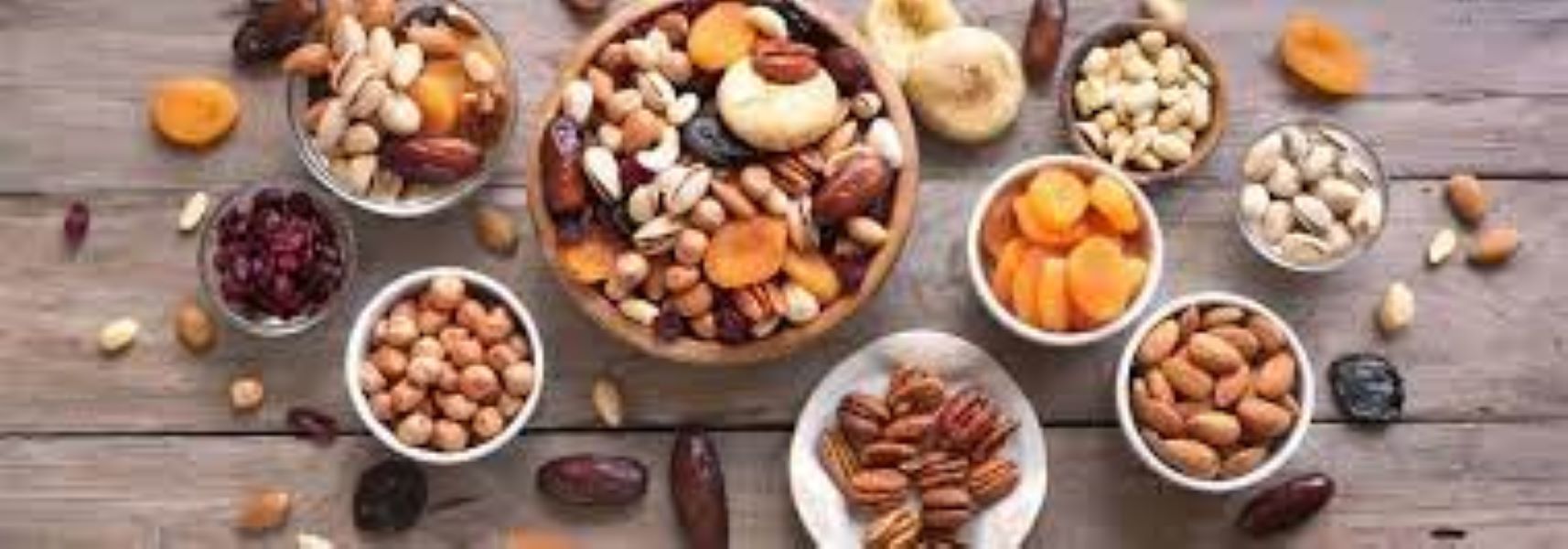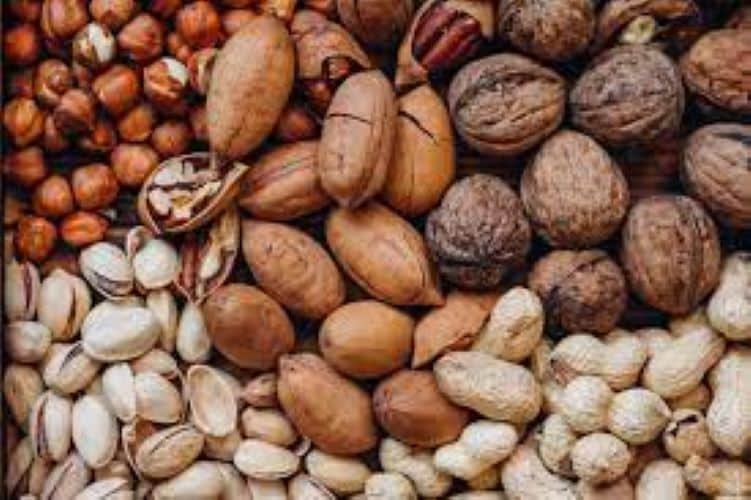Blog
Everything to Know About Buying Quality Nuts

Nuts are a great addition to most any diet. They’re high in healthy fats, protein, and nutrients like magnesium and selenium. But if you’re not careful, buying nuts can be an expensive mistake that’s bad for your health and wallet. Here’s what you need to know about purchasing quality nuts:
Nuts can be an excellent addition to a healthy diet.
Nuts can be an excellent addition to a healthy diet. Nuts are high in protein, fiber and healthy fats. They’re also rich in minerals such as magnesium and selenium; vitamins like vitamin E, B6 and folate (folic acid); along with phytochemicals that may protect against heart disease and cancer.
So what are the best nuts to buy? Here’s our guide:
1. Almonds. Almonds are a great source of protein, vitamin E and magnesium, which is why they’re often recommended to people suffering from osteoporosis. They also contain lots of fiber, so they’re good for digestion and heart health.
2. Walnuts. A handful of walnuts can provide you with more than 100 percent of your daily requirement for vitamin E, which is an antioxidant that helps protect against certain types of cancer, heart disease and age-related cognitive decline. They’re also high in healthy fats and protein.
3. Cashews. Cashews are a good source of magnesium and iron, so they’re great for preventing anemia. They also contain lots of vitamin K, which helps keep bones healthy by promoting the production of osteocalcin (a protein) in bone marrow cells.
4. Macadamia nuts. Macadamia nuts are a good source of monounsaturated fat, which helps lower “bad” LDL cholesterol and improve blood sugar control. They’re also high in potassium and protein. 5. Peanuts/groundnuts (peanut butter). Peanuts are high in folate, magnesium and vitamin E, which means they’re good for heart health and may help prevent certain types of cancer like prostate cancer.
They’re also a good source of iron and calcium, so they can help prevent anemia and osteoporosis. 6. Pecans. Pecans are rich in heart-healthy monounsaturated fats and contain significant amounts of vitamin E, which helps protect against certain types of cancer, heart disease and age-related cognitive decline. 7. Pistachios. Pistachios are high in fiber, protein and antioxidants such as vitamin C, beta carotene (a form of vitamin A) and polyphenols that may reduce the risk of developing chronic diseases such as cardiovascular disease, diabetes and certain types of cancer.
You should look for nuts in the shell, or at least make sure there’s no evidence of cracking.
- You should look for nuts in the shell, or at least make sure there’s no evidence of cracking.
- Cracked nuts are not good.
- Pre-shelled nuts are not as good as shelled ones, but they’re still better than those that have been sitting on a shelf for months (or years) without being refrigerated or frozen.
- If you don’t want to shell your own nuts, look for unshelled ones; many stores will sell them this way now–just make sure that they aren’t already rancid! At home, keep your nuts in an airtight container and store them somewhere dark and cool (not cold).
When you’re ready to use your nuts, make sure they are fresh by smelling them. If they don’t smell like anything at all, or if they smell rancid or oily, throw them out! You can also tell if nuts are rancid by looking at them: if their shells appear dull or faded in color, it’s a sign of rancidity.
If you don’t have enough nuts to use within a few days, freeze them. Keep in mind that freezing will cause some of their flavor and texture to be lost.
If you’re not sure if the nuts you have are rancid, there are a few ways to test them: 1) Throw some salt on them. If they don’t dissolve, they’re probably stale or rancid.
2) Put some in your mouth and chew them. If they taste gritty or like metal, they’re rancid.
3) Put them in water. If the nuts float, they’re rancid. 4) Throw some out on a plate and leave them out overnight. If they are still there in the morning, they’re rancid.
The best way to tell if your nuts are fresh is by looking at them.
The best way to tell if your nuts are fresh is by looking at them. If they’re oily toasted, not burned, and in the shell (not cracked or salted), then they’re probably good to go.
If you want to be 100% sure that your nut purchase is up-to-date on all of its latest health benefits, soak it overnight in water before eating it. This will help remove any toxins from the shell of the nut so that when you eat it later on down the road, nothing gets into your body except for delicious goodness!
If you don’t have time for this step but still want some freshness in your life–no judgment here–then try buying cashews from bulk bins instead of bags; this way there’s less chance that someone else has opened up their package first and contaminated all those tasty little guys inside!
If you want to get even more freshness in your life, try buying nuts from a farmers’ market. This way, you can talk to the farmer and ask them how they prepared their nuts so that they stay as healthy as possible.
It’s better to buy unsalted nuts than salted ones.
You may be wondering why you should avoid salted nuts. Well, it’s really quite simple: salt is a preservative. It keeps foods from spoiling and can make them taste better in the process, but it also adds unnecessary calories and sodium to your diet. If you’re trying to watch your blood pressure or cut down on salt intake, then eating salted nuts is not recommended because they will raise both of these things drastically (more so than unsalted).
Also keep in mind that most people don’t need as much sodium as they think they do–about one teaspoon per day is plenty! And remember that even though nuts are generally considered healthy foods with lots of nutrients, there are other ways to get those nutrients besides eating them straight up as a snack; for example: kale chips contain more iron than almonds do!
Your nuts should be oily toasted, not burnt.
- Your nuts should be toasted, not burnt.
- They should be oily and crunchy, not dry and soft.
- They should have a nice aroma and color.
- The ideal temperature for toasting nuts is 350 degrees Fahrenheit; 8 minutes at that temperature will yield perfect results!
Nuts are best stored in an airtight container, such as a mason jar or Tupperware. This will keep them fresh and prevent them from becoming rancid. You can also freeze your nuts for long-term storage.
Nuts are a great addition to any diet and can help you lose weight. They have been shown to boost metabolism and reduce cravings for junk food.
Nuts are also packed with nutrients that can help you keep a healthy heart. They have been shown to reduce the risk of heart disease, lower cholesterol levels and prevent blood clots. Nuts are high in monounsaturated fats, which can improve your blood lipid profile by lowering triglycerides and increasing HDL cholesterol (the good kind).
Nuts are also rich in antioxidants and vitamin E, which can help prevent cell damage.
Nuts are also high in fiber, which can aid digestion and reduce cholesterol levels. Eating nuts has been shown to improve the health of your heart by reducing blood pressure, inflammation and oxidative stress. They have also been linked to lower rates of diabetes due to their high antioxidant content.
If you have time, soak your nuts in water overnight before eating them.
If you have time, soak your nuts in water overnight before eating them. This will help to remove the phytic acid that can cause digestive problems and make it easier for your body to digest them. Soaking also makes nuts absorb more nutrients from the soil, but this depends on how fresh they are when you buy them (older nuts will lose their ability to soak up nutrients).
To soak nuts, place them in a bowl of water and let them soak overnight. Make sure the water covers all of them and change it every morning before using or consuming any soaked products–this helps prevent bacteria growth while removing excess salt from what may have been added during processing or storage procedures at home! Finally: rinsing off any remaining salt after soaking isn’t necessary unless someone has high blood pressure issues; otherwise just enjoy those tasty treats guilt-free knowing everything went smoothly during preparation 🙂
The only thing you need to watch out for is rancidity. If nuts have been stored for a long time or in an area where there has been excessive heat, they may become rancid and develop a bad smell. If you are unsure about the freshness of a product, check the expiry date on the packaging before buying.
In terms of safety, nuts are a low-risk food. Most types of nuts are safe for people with allergies to peanuts or tree nuts. However, some people may have an allergy to one type of nut but not another (such as walnuts but not almonds). It’s important to check with your doctor before eating any new food if you have a known allergy or intolerance. The U.S. Food and Drug Administration has issued warnings about certain types of raw cashews because they can cause severe allergic reactions in some people due to the presence of urushiol oil in their shells.
When it comes to buying the best nuts, you need to know what signs will help you determine their quality.
When buying nuts, there are a few signs that can help you determine their quality. First and foremost, always pay attention to the color of your nuts: if they’re bright and vibrant, then they’re fresh; if they’re dull and faded in color, it’s likely that they’ve been sitting on store shelves for too long.
Another important thing to look out for is how dry your nuts are when you purchase them–if there’s any moisture inside the package or around its seams (or anywhere else), this means that moisture has gotten into your package and possibly ruined some of its contents as well! This is not good news because moldy food means toxins could be lurking within those bad boys too–and nobody wants toxins in their body! So just keep an eye out for these signs next time around when shopping around town at local grocery stores like Whole Foods Market which offer many different varieties including cashews
and almonds. Also, if you’re wondering where to buy cashews, that’s easy–just head over to your local grocery store!
So if you’re looking for a tasty snack that’s protein-packed, healthy and delicious (and maybe even a little crunchy), then look no further than our favorite nut: the cashew!
If you’re looking for some good ol’ fashioned cashews, we’ve got them right here! You can pick up a bag of these little guys at your local grocery store or online so that you can enjoy their delicious taste anytime.
So what are you waiting for? Go grab a bag of these crispy, crunchy cashews and enjoy!
We know it can be hard to find the perfect snack that’s both healthy and delicious. We also know how hard it is to find a snack that will satisfy your cravings without making you feel guilty about eating too much! But all that ends today because we’ve got the answer: cashews! And they’re not just any old nuts; they are packed with protein, which means they help you build muscle while also keeping your body feeling full longer than other snacks like chips or candy.



